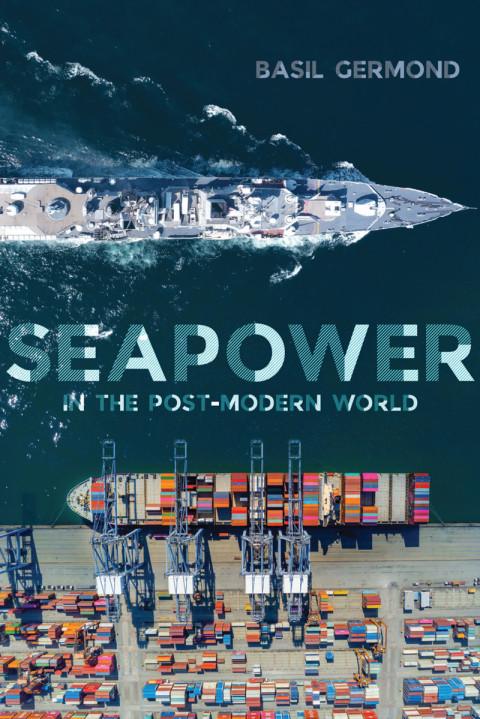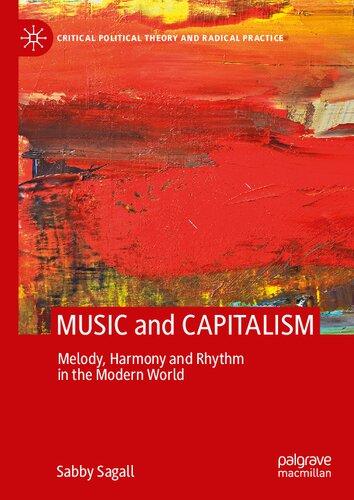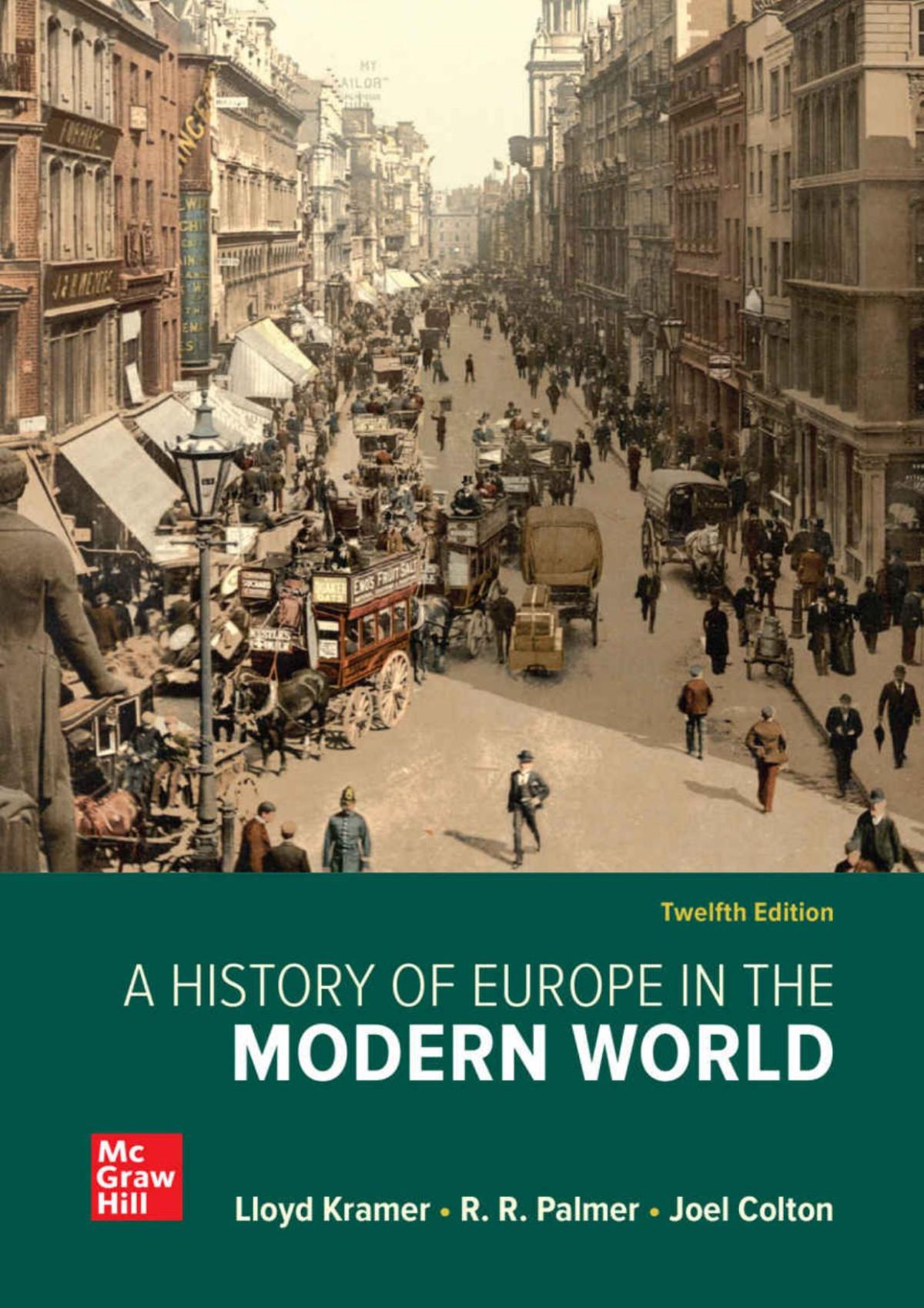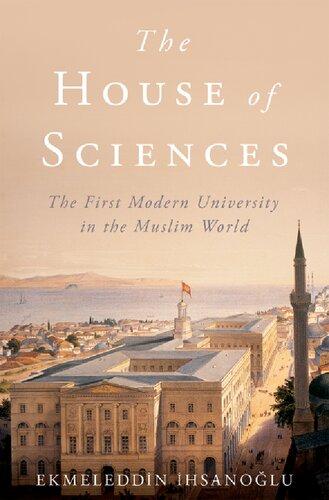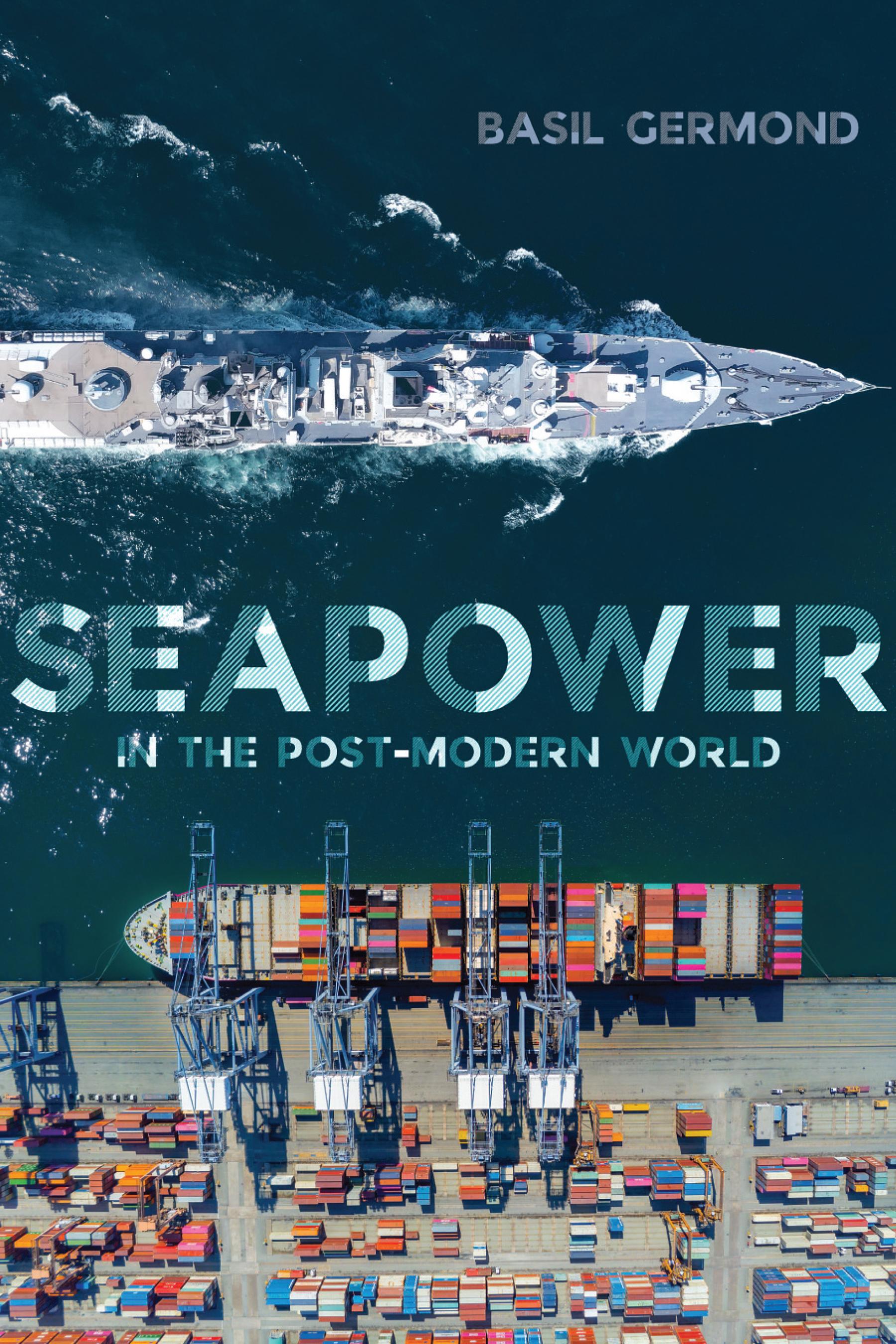Seapower in the Post-Modern World
Ba S il Ger M ond
McGill-Queen’s University Press Montreal & Kingston • London • Chicago
© McGill-Queen’s University Press 2024
i SB n 978-0-2280-2087-5 (cloth)
i SB n 978-0-2280-2088-2 (paper)
i SB n 978-0-2280-2089-9 (epd F )
i SB n 978-0-2280-2090-5 (ep UB )
Legal deposit first quarter 2024
Bibliothèque nationale du Québec
Printed in Canada on acid-free paper that is 100% ancient forest free (100% post-consumer recycled), processed chlorine free
We acknowledge the support of the Canada Council for the Arts. Nous remercions le Conseil des arts du Canada de son soutien.
McGill-Queen’s University Press in Montreal is on land which long served as a site of meeting and exchange amongst Indigenous Peoples, including the Haudenosaunee and Anishinabeg nations. In Kingston it is situated on the territory of the Haudenosaunee and Anishinaabek. We acknowledge and thank the diverse Indigenous Peoples whose footsteps have marked these territories on which peoples of the world now gather.
Library and Archives Canada Cataloguing in Publication
Title: Seapower in the post-modern world / Basil Germond.
Names: Germond, Basil, author.
Description: Includes bibliographical references and index.
Identifiers: Canadiana (print) 2023056173X | Canadiana (ebook) 20230561780 | i SB n 9780228020875 (cloth) | i SB n 9780228020882 (paper) | i SB n 9780228020899 (epd F ) | i SB n 9780228020905 (ep UB )
Subjects: l CS h : Sea-power. | l CS h : International relations.
Classification: l CC V 27.G 47 2024 | dd C 359/.03—dc23
This book was typeset by Marquis Interscript in 10.5/13 Sabon.
and
To Bryony
Heather
Tables and Figures ix
Preface xi
1 A Historiography of the Concept of Seapower 13
Seapower in International Relations 31
Seapower and (Post)Modernity: A New Framework for Analysis 43
From Pre-modern to Modern Seapower 64
Post-modern and Neo-modern Seapower 100
Solidaristic and Civilian Seapower 130
7 Conclusion: The Future of Seapower 156 Notes 167 References 169 Index 189
Tables and Figures t a B le S
1.1 Contributors to seapower scholarship (twentieth to twenty-first centuries) 27
2.1 A summary of ir theories’ take on seapower 38
2.2 Typology of power and the nature of seapower 42
4.1 The layers of pre-modern seapower 77
4.2 The layers of modern seapower 98
5.1 Post-modern naval missions 113
5.2 The layers of post- and neo-modern seapower 129
7.1 The evolution of seapower 159
Fi GU re S
3.1 The elements of seapower 53
3.2 The trinity of naval missions 56
3.3 The consequences of seapower 59
3.4 The three layers of seapower and the virtuous circle of seapower 59
3.5 Three-layer analysis of seapower 63
4.1 Mutually beneficial relationship between seapower, imperialism, and state building 81
4.2 Mutually beneficial relationship between maritime culture, seapower, and nation-states 90
4.3 Seapower and liberalism 91
4.4 Seapower as modernity 99
6.1 The solidaristic society of maritime nations 136
Preface
As this book goes to press, the Russian invasion of Ukraine is well into its second year. This sinister war of aggression, the first of this scale on the European continent since 1945, is a historical turning point. I wonder how twenty-second-century historians will reflect on this war. Will the consensus be that the twenty-first century started in 2022 like the twentieth century started in 1914 with World War I and the nineteenth century in 1815 with the Congress of Vienna? Or will the period from 1989 to 2022 be remembered as a mere bracket in the history of the (Cold) War between the West and Russia (and China) that started in 1947?
These questions are deeply connected to a book devoted to seapower. Indeed, if 2022 confirms the start of a new phase in the global rivalry between Russia, China, and the West, will it also cement the overarching confrontation between the continental Eurasian Heartland and the maritime nations of the crescent (Mackinder 1904; Spykman 1944) anticipated by classical geopolitics scholars? And if this happens, will China’s increasing seapower be instrumental in initiating a change in global leadership? Ukraine’s military successes against Russia – David against Goliath – cannot be dissociated from Kyiv’s adoption of a Western-informed agile, strategic thinking that has, so far, proven effective against the continental mindset of Russian military planners. Although the naval dimension of the war remains minimal, seapower (in its broadened interpretation) is playing a role. Whereas commentators focus solely on the Ukrainian successes against Russian naval forces (which indeed are remarkable, such as the sinking of the cruiser Moskva, flagship of the Black Sea Fleet), Western control of the global supply chain is playing a more discreet role, one that will be crucial
in the longer term by undermining Putin’s Russia’s ability to attack its neighbours via the profound and enduring effects this control exerts on Russia’s economy, finance, and industrial-military base. This strategic effect of seapower does not result from any encounter between the North Atlantic Treaty Organization (nato) and Russia but from Western command of the global maritime order, including an organic relationship with civilian maritime stakeholders.
Seapower has been the object of many studies since its popularisation by Captain Alfred Thayer Mahan in the late nineteenth century. However, most of these studies have either sparingly discussed or circumvented or even plainly avoided the question of defining seapower as a concept. Seapower is often conflated with maritime strategy or command of the sea; it has acquired an almost mythical status, and thus it is, for many authors, beyond the need for any conceptual definition. However strange it may sound, seapower has still not been comprehensively defined in the academic literature. After all, in the words of Paul Kennedy who was referring to Mahan: ‘if generalizations about the nature of sea power are risky, then, it would be a bold author who would claim to have detected certain “immutable” laws concerning naval affairs and navies that were applicable to all ages’ (2022, 98). Far from being ‘bold’, I endeavour with this book to contribute to defining the concept of seapower. I also discuss the continuity and changes in the practice of seapower throughout history, and as such, the text contributes to existing debates about the role of seapower in explaining what Modelski and Thompson (1988) call hegemonic cycles.
Such a scholarly endeavour is based on my engagement with a wide variety of authors, from Greek philosophers to twentieth-century strategists and historians. I owe them all a debt of thanks. And in the famous words of Isaac Newton: ‘if I have seen further, it is by standing on the shoulders of giants’. Among those giants are two academics who played an important role at the beginning of my intellectual journey on the seven seas in the 1990s and early 2000s: Eric Grove and Geoffrey Till. Eric has now left our shores, but I fondly remember time spent with him, eating oysters and drinking champagne on the Blackpool Promenade while revisiting British naval history in passionate discussions. Both scholars have inspired a then young student of naval power, who has since grown into a confident scholar of seapower. I hope to follow in their footsteps with my humble contribution to this fascinating field of study. I also warmly thank the three
anonymous reviewers whose exceptional scholarship and sharp suggestions have ever improved this book.
Writing a book is a long commitment, and many people deserve my cheers: Lancaster University has supported me and even promoted me to chair in international security. My wife, parents, and beloved daughters who have always been there for me. My thanks to the editors of the Australian Naval Review in which a previous iteration of chapter 6’s section on “the solidaristic society of maritime nations” was published. This book has also benefited from an interdisciplinary approach that would not have been possible without intellectual engagement with scholars in various disciplines, from security studies to critical political geography, and from history to marine biology. I cannot list them all here, but I would like to express my special thanks to Christian Bueger, Timothy Edmunds, Kimberley Peters, and Philip Steinberg. Finally, my thanks to my commissioning editor at McGill-Queen’s University Press, Richard Baggaley, whose proactivity and support have been instrumental in my delivery of this book.
Writing a book remains a solitary endeavour though, and at the end of a long process, it is important to self-reflect on the intellectual journey and the subject matter of the book itself. Early naval historians, among them Mahan, Colomb, and Corbett, have focused their attention on naval power in the context of imperialism without questioning the practice itself. Indeed, ‘in their day it was empire which made nations great, and navies which made empires’ (Rodger [1997] 2004, xxii). There are three steps toward decolonising seapower studies: first, recognising the contribution of seapower to imperialism, colonisation, and their wrongdoings. This effort is well on track with studies having reflected on seapower’s contribution to colonial empires (e.g., Münckler 2007) as well as exploitative capitalism (Campling and Colás 2021). It is nevertheless crucial to continually reflect on the past and on the way it has been studied when engaging with a book that is as much about the past as it is about the present. Second, accounting for the existence of non-European, non-Western naval thought that has run parallel with the traditional European thought. The scope of this book only permits a superficial engagement with such sources of seapower thought, which will be the subject of a next book. Finally, seapower via maritime endeavours is also about accepting differences and fostering them in the spirit of what former First Sea Lord, Admiral Sir George Zambellas, called the ‘brotherhood of the sea’.
Abbreviations
C 4i S tar system Command, control, communications, computers, intelligence, surveillance, target acquisition, and reconnaissance
eez s Exclusive economic zones
G dp Gross domestic product
i M o International Maritime Organization
ir international relations
ii SS International Institute for Strategic Studies
M da Maritime Domain Awareness
M pa s marine protected areas
nato North Atlantic Treaty Organization
S lo C s sea lanes of communication
U n C lo S
United Nations Convention on the Law of the Sea
V pd s vessel protection detachments
Seapower in the p o S t-Modern w orld
Introduction
The subject matter of this book is seapower (also written as sea power, in this case usually as a synonym for naval power). The concept of seapower is delineated in chapter 1, but it is important to make the distinction between naval power and seapower clear from the beginning. Naval power refers to what navies – or, more broadly, forces operating at, under, or above the sea – can do at or from the sea that contributes to states’ defence and security and serves states’ broader interests. Seapower refers to the maritime milieu that is the sea and infers a positive link between the sea and states’ power, which transcends naval power to include economic, civilian, and ideational forms of power, whose impacts are not limited to short-term and/or military considerations. The concept of seapower accounts for the mutually beneficial relationship between seafaring culture, naval power, economic growth, and global dominance.
Since the classical writings of Captain Alfred Thayer Mahan (1890), Vice-Admiral Philip Colomb (1891), Sir Julian Corbett (1911), and other pioneers in the field of naval history and maritime strategy, seapower has been discussed sparingly in the academic literature regardless of disciplines, especially during the Cold War era, when scholars’ attention was focused on nuclear power, the defence of the European continent, and guerrilla-type proxy wars. French strategist Hervé Coutau-Bégarie, the last and seemingly only contemporary French naval strategist, explains that when he started to study maritime affairs in the 1980s, he was essentially the only scholar in the French academic community to be interested in naval strategy; almost everything had to be written. Actually, ‘we could write anything on the topic’, he remarks (quoted in and translated from Kouar 2010, 17).
The end of the Cold War did nothing to increase scholars’ attention toward naval affairs. It is fair to say that ‘sea blindness’, a lack of awareness of the sea and a lack of consideration for the role it has played (and still plays) for security and prosperity, has particularly affected continental scholars.
This gap in the literature on seapower is less pronounced in the English-speaking world, whose seafaring traditions and maritime outlook have contributed to produce more naval scholars. Even so, seapower is certainly a forgotten topic in international relations (ir ) and political science. Naval historians have been more prolific, including such recent examples as Eric Grove (1990), John B. Hattendorf (2000a; 2011), Paul Kennedy ([1976] 2017; 2022), Andrew Lambert (2000; 2018), N.A.M. Rodger ([1997] 2004; 2004), and Ian Speller (2014). Strategists have mainly focused on navies, naval warfare, and maritime strategy, including Bernard Brodie (1943), Norman Friedman (2001), Colin S. Gray (1992; 1994), and Geoffrey Till (1987, 1994, 2004, 2022), while nevertheless discussing the concept of seapower (see especially Till 2004, 2018). Political scientists have rather sparingly studied seapower. Some have focused on naval diplomacy, for example Hedley Bull (1976b), Ken Booth (1979, 1985), and Christian Le Mière (2014), others on global leadership and cycles of dominance such as Modelski and Thompson (1988). Some critical geographers have also discussed the ideational dimension of seapower and deconstructed the traditional representation of the ocean as a void, such as Steinberg (2001).
In the twentieth century, several naval practitioners have made important contributions to seapower studies, notably French admiral Raoul Castex (1931–39), British admiral Herbert Richmond (1934, 1946), British captain Stephen Roskill (1962), British admiral Peter Gretton (1965), US admiral Stansfield Turner (1974), Soviet admiral Sergey Gorshkov ([1976] 1979), US rear admiral Henry Eccles (1979), British rear admiral J. Richard Hill (1986), and US admiral James Stavridis (2017), to name but the most prolific thinkers. The shrinking number of substantial academic contributions by naval practitioners since the end of the Cold War demonstrates the lack of academic interest in the maritime domain, which further underscores that contemporary naval practitioners have not been encouraged (even for career purposes) to engage with the topic of seapower outside their professional environment, contrary to their predecessors.
The above (non-exhaustive) enumeration of authors may give the erroneous impression that seapower has not been neglected in the academic literature. However, the meaning, attributes, scope, and effects of seapower have not been much discussed since most of these naval scholars and practitioners have focused on navies, naval missions, and naval operations as well as naval strategy and not on seapower itself. Even Modelski and Thompson (1988), whose book makes an important contribution to the field by demonstrating that seapower is instrumental in explaining hegemonic cycles, mainly use quantitative indicators based on naval strength. In addition, due to the fragmentation of the debate spanning various disciplines, we have not witnessed the development of any particular ‘seapower school of thought’. There is a ‘command/ control of the sea school of thought’, which finds its origins in Mahan’s work and was then further developed by various scholars and practitioners, as well as a so-called British School (Till 2006) interested in the exercise of the command of the sea, inspired by the works of Corbett (1911). But their work mainly relates to maritime or even naval strategy, not seapower, despite regular use of the term in their book titles.
Furthermore, in the twenty-first century, except for Till’s seminal work Seapower: A Guide for the 21st Century (2004), which was reedited in 2009, 2013, and 2018, as well as Andrew Lambert’s Seapower States (2018), seapower is mostly studied from a regional and naval perspective, such as China and India (see for example various academic pieces by Toshi Yoshihara and James Holmes). I contributed to this trend with my 2015 book The Maritime Dimension of European Security, although I framed my analysis within a broader discussion of seapower in the twenty-first century. Finally, an important contribution to knowledge in the field is the literature on seafaring and the importance of the sea in economic, political, or cultural terms. However, these anthologies spanning historical eras, such as Abulafia (2020), Paine (2013), and de Souza (2001), do not focus on seapower itself.
Thus, the general aim of this book is to fill the existing gap in the literature by comprehensively discussing the concept and practice of seapower and strictly focusing on seapower rather than seafaring or naval/maritime strategy. The objective is to explain how, despite its evolving characteristics, seapower still shapes world politics in the twenty-first century and demonstrate why it deserves further attention from academics and practitioners alike. Understanding the tenets, advantages, and limitations of seapower is crucial in the context of the new Cold War taking shape between the West and Russia (and
China). In other words, in a period of impending global leadership challenges, seapower is likely to play a significant role and thus warrants due attention.
The title of this book is a nod to Admiral Sir Herbert Richmond’s Sea Power in the Modern World (1934). Richmond claimed that many changes occurred between the periods Mahan studied – roughly from the seventeenth century to the Napoleonic Wars – and the early twentieth century. Richmond thus wanted to address the resulting gap in our understanding of seapower by accounting for the new economic, technological, political, and military realities of his time. Similarly, my book situates our understanding of the concept and practice of seapower within a technological, societal, and political context that differs from those both Mahan and Richmond studied.
The last couple of decades of the twentieth century and the early decades of the twenty-first century have witnessed a rising interest in post-modern approaches and the concept of post-modernity in the field of ir . First, at the epistemological, ontological, and methodological levels, post-structuralist and deconstructive approaches have emerged within the discipline of IR, notably since the 1980s. Influenced by the continental philosophical movement associated with philosophers such as Michel Foucault and Jacques Derrida, post-structuralist approaches to ir claim that the main determinant of ir is not the material distribution of power among states or non-state actors but rather knowledge, how it is produced, constructed, reproduced, and perceived and how such constructions contribute to normalising policies and practices. This constitutes a major advancement in the discipline, which has induced the ongoing so-called fourth debate in ir between the proponents of such post-positivist approaches and the positivist/rationalist scholars opposing them. Consequently, in academics’ imaginaries, the concept of post-modernity has been linked to this major epistemological, ontological, and methodological opposition between scholars in ir and beyond.
However, beyond ir theorists, many scholars interested in world politics and security, notably historians, have taken post-modernity into account in their analyses without themselves adhering to the post-modern academic agenda. In fact, a post-modern label has been attached to many actors and processes to acknowledge that their characteristics, objectives, means, or strategies are not aligned with modern (materialist) principles. As such post-modernity is a concept employed to account for the changing reality and the evolution of the
subject matter of world politics. For example, Anderson (1996) talks about ‘post-modern territorialities’ to refer to the geo-politico-legal reality emerging from the European Union integration process and the resulting ‘unbundling of territoriality’. In another example, postmodern diplomacy refers to public diplomacy, whose main goal is to interfere with foreign public opinion’s perception as well as to account for the growing role played by non-state actors in diplomacy for the past decades (e.g., Melissen 1999). In the very field of maritime studies, Till (2007) stresses the existence of ‘post-modern navies’ (along with modern ones), which have ‘different assumptions, sets of missions and acquisition programs’ (569) and ‘have an internationalist, collaborative and almost collective world outlook. They see their role as defending the system, directly at sea and indirectly from the sea’ (571).
In sum, the modernity/post-modernity debate has informed scholars across disciplines and far beyond the positivist/post-positivist epistemological/methodological debate. The realisation that the practice of ir bears post-modern characteristics is the starting point of this book. However, Russia’s territorial war in Ukraine demonstrates that modern or neo-modern practices coexist with the post-modern features of the current world order. And as for seapower, post-modern elements go alongside neo/modern ones.
Classical seapower scholars have mainly based their arguments on evidence from the modern era, starting with the Age of Discovery, such as Mahan ([1890] 2007), Colomb (1899), and Corbett (1911). Later authors focus on the more recent modern period since the second industrial revolution, such as Richmond (1934) and Brodie (1943), and beyond, for instance Gretton (1965), Roskill (1962), and Grove (1990). This book discusses seapower through the prism of pre-modernity/modernity/post-modernity/neo-modernity. By doing so, it is possible to highlight not only the changes but also the permanencies associated with seapower that transcend historical eras far beyond a classical Mahanian analysis of the advantage of maritime over land power. What are the constant features of seapower? And which ones are subject to change depending on the period under scrutiny? Post-modern elements of seapower may well have already been present during the modern era, such as the principles of freedom of the seas. Similarly, current post-modern dimensions of seapower such as good governance at sea and cooperative maritime security initiatives tend to lead to neo-modern forms of practice at sea, such as an increasing territorialisation of the maritime domain.
In sum, this book seeks to contribute answers to the following questions: to what extent are seapower’s characteristics timeless? To what extent have the socio-economic-cultural characteristics associated with the pre-modern, modern, and post-modern eras influenced seapower? For instance, the values associated with modernity, such as liberal values, must be differentiated from those associated with seapower, such as seafaring and trade values, since the latter seem to transcend historical periods (Till 2004, 22). This book critically assesses the extent to which the permanencies associated with the concept of seapower transcend these historical periods. The aim is to enhance our understanding of seapower as a concept and a practice, while reflecting at the theoretical level on the enduring relevance of the framing of ir within premodernity, modernity, and post-modernity. Whereas the discourse on seapower has certainly varied depending on places and time, this book shows that seapower as a concept indeed bears some timeless characteristics, although the concept, narrative, and practice are mutually constitutive. Seapower in the twenty-first century combines traditional modern elements, such as naval power, with post-modern elements, such as collective and civilian seapower, and neo-modern elements, such as the process of territorialisation of the sea and new naval arms races. This book also contributes to the broader discussion about the ‘destiny’ of seapower. Indeed, current debates mostly focus on the future of seapower by examining changes in its constitutive elements and effects. The broader question is the extent to which seapower will remain the dominant feature of IR, defence, and security. Paul Kennedy is sceptical of the timelessness of seapower in light of ‘immense technological, political and demographical changes’ (2017, 6). He suggests that if dominant naval forces are prevented from freely operating close to the shore due to land-based anti-access/access-denial weapons systems, then ‘seapower’s capacity to affect land outcomes may have been short-lived’ (P. Kennedy 2017, xl). Modelski and Thompson argue that although seapower has been the ‘higher-order power medium’ since the modern era (1988, 13), it might eventually be replaced by outer space power. Interestingly, these two interpretations of seapower’s fate account for the dominant role it has played in global politics since at least the Age of Discovery but consider its future as contingent on technological changes. The modernity/post-modernity framework of this book accounts for technological but also ideational factors in assessing the future of seapower.
Beyond its main contribution to seapower scholarship, this book aims to add to the literature on the oceans’ role in ir . Naval and geopolitical considerations are indeed just one aspect of the broader ‘turn to the ocean’ that is taking place both in academic and practical terms with the gradual move away from ‘sea blindness’ (Bueger 2022; Peters et al. 2022). In particular, the systemic challenges posed by climate change and ocean sustainability, and the ways climate and the oceans interact (the ocean-climate nexus), cannot be dissociated from their security dimension, from climate change-induced increase in illegal fishing practices and fisheries conflicts to the geopolitical tensions arising from the melting polar ice cap. This book situates military, security but also governance and sustainability challenges at sea, within the evolving context of modernity/post-modernity/neo-modernity and, as such, offers a framework for the analysis of the centrality of the oceans in international politics that can be employed beyond the field of seapower.
The first three chapters construct a framework for analysis. Chapter 1 offers a preliminary definition of seapower based on the historiography of the concept and debates regarding the preponderance of seapower, the relationship between naval power and seapower, as well as the connection between seapower and maritime strategy. Chapter 2 introduces the central concepts of power in ir and situates the concept of seapower within the discipline of ir and international security studies. Since power (and seapower) can be measured and interpreted in many ways, chapter 2 offers a conceptual clarification.
Then, chapter 3 reveals how seapower can be analysed through the prism of the modernity/post-modernity debate. Modernity and postmodernity are also debated concepts, whose scope spans disciplines. By bringing together the two concepts of seapower and modernity/ post-modernity, chapter 3 proposes an original framework for analysis that accounts for both changes and permanencies. The framework endorses a comprehensive approach to seapower that accounts for its naval, economic, civilian, and ideational dimensions at three different levels: the elements, the enactment, and the consequences/outcomes of seapower. It shows that the ideational factors are central to understanding the evolution of seapower, but states and human agency still constitute important determinants since seapower is ultimately about operating at, via, and from the sea as well as controlling human activities at sea.
The next two chapters apply the framework for analysis to the evolution of seapower from ancient times to the contemporary era to grasp the extent to which, and how, the evolution from pre-modernity to modernity and from modernity to post-/neo-modernity has impacted both the concept and practice of seapower. Chapter 4 starts with a review of the characteristics of pre-modern seapower. The purpose is to discuss the extent to which the so-called pre-modern political, social, and cultural features have influenced the practice of seapower in the pre-modern era. Seapower as a concept and a practice – and to some extent even a narrative – emerged during the pre-modern era. Technological and material factors more than ideational ones explain the limitations of seapower during this era. Then, the chapter discusses the extent to which modern features such as the belief in technology, the compression of time-space, and the development of nation-states have impacted on the nature, narrative, and practice of seapower since the Age of Discovery. The chapter concludes on the mutually reinforcing link between (nation) state building, empire building, and seapower but cautions against associating the development of seapower too closely with modern characteristics, since the main characteristics of seapower could already be found in the pre-modern era.
After debating the extent to which we currently live in a post-modern world, chapter 5 questions the impacts of post-modern features such as a further compression of time-space, an over-reliance on technology and communication, the re-emergence of non-state actors, and the rising power of supranational institutions that influence the practice of seapower. The practices of maritime security and ocean governance are deconstructed to illustrate the consequences of the dominant narrative that justifies practices of control beyond one’s territorial waters. Indeed, the ongoing dynamics of the deterritorialisation of security are completed by a territorialisation of the sea that has initiated a movement towards a neo-modern form of seapower, which demonstrates the existence of enduring permanencies such as the control of human activities and flows at sea. Additionally, neo-navalism in Asia and the use of ‘grey zone’ tactics at sea contribute to the centrality of seapower in the context of an impending global leadership challenge.
Chapter 6 introduces two new concepts. First, the notion that collective seapower accounts for the increasingly integrated and cooperative dimension of naval operations, maritime security, and global
governance of the oceans. The chapter discusses how maritime nations, led by the West but forming a distinct category of like-minded seafaring partners, have formed a ‘solidaristic society of maritime nations’ (Germond 2022c). Second, the chapter discusses the civilian dimension of seapower, that is to say the economic use of the sea and the role played by non-state actors, such as merchant marines, shipping companies, port authorities, which exercise forms of seapower in their own interests and in conjunction with states and sub-state actors. The chapter concludes that the preponderance of the West as a collective of maritime nations that structurally dominates the global order is intimately linked to civilian assets and interests. Control of the global supply chain and global reach capabilities are central to global leadership. As such, seapower is likely to play a crucial role in the forthcoming global leadership challenge.
The book concludes with the fact that permanence more than change characterises the evolution of seapower as a concept and a practice. It is thus necessary to go beyond the debate on modernity/ post-modernity to grasp the nature of seapower as well as its relevance for states, international organisations, and non-state actors. In the context of a rising strategic competition akin to an impending global leadership challenge, and in light of outer space’s increasing role, the balance between permanencies and changes is likely to characterise the future of seapower as much as the future of the world order.
The conclusion proposes some next steps in seapower studies. In particular, an important question is the extent to which the timelessness of seapower is also universal in that it applies to non-Western actors, past and present. Although this question is discussed in this book, which highlights the universality of seapower both as a concept and a practice, the European/Western lens needs to be deconstructed. Further research is needed to grasp the similarities between Western and non-Western experience of seapower from an ideational perspective. By demonstrating the timelessness of seapower in the Western world, the central role of ideational factors, and the implications in terms of framing studies within the modernity/post-modernity debate, this book paves the way for future comparative studies between regions or at a sub-level. The book also opens the door for further efforts to decolonise seapower studies by recognising and integrating the contributions of non-European, non-Western thinkers, texts, and practices. Scholars interested in seapower, or more generally in the
maritime dimension of world politics, are encouraged to consider the sea beyond a placeless void to account for individuals’, economic agents’, and political actors’ timeless efforts to operate, trade, travel, connect, and fight at sea as well as to control and regulate human activities and flows at or from the sea.
